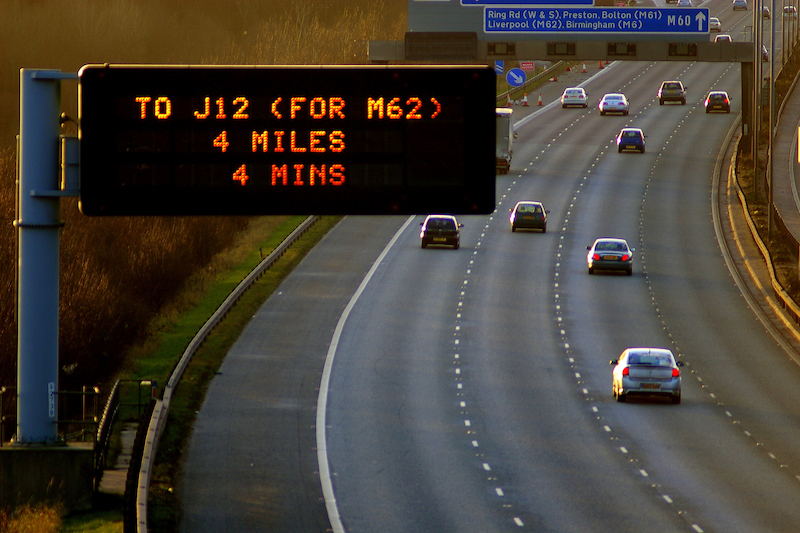The rise and fall of smart motorways | 1st Central

Smart motorways are meant to reduce congestion and increase capacity during the busiest times on the road. Opening the hard shoulder as a running lane is just one example of how smart motorways can help ease congestion.
However, the safety of smart motorways is now being called into question. On April 16, PM Rishi Sunak announced the building of all new smart motorways is being halted due to safety concerns, but those already in existence would continue to get funding for improvement.
When did smart motorways start?
The term ‘smart motorway’ was introduced in 2013, but the first smart motorway was actually trialled in 2006 on the M42 in the West Midlands. The hard shoulder was converted into a running lane, and the speed limit was increased from 50mph to 60mph in an effort to reduce congestion.
In April 2021, the government announced that all new smart motorways would be fitted with radar and additional cameras to help spot stopped cars and drivers breaking the law.
How do smart motorways work?
Smart motorways use a number of different tools and technologies to make the roads safer for everyone. These include:
- Stopped Vehicle Detection (SVD) technology – SVD uses radar technology to detect vehicles that have stopped for reasons other than being in heavy traffic following an accident or breakdown.
A stopped vehicle is analysed by the software and an alert is sent to a control room, detailing the exact location of the vehicle. Operators can then make informed decisions about altering speed limits and closing lanes.
- Dynamic hard shoulder – On some smart motorways the hard shoulder becomes a running lane, meaning its used for traffic at all times and is only closed if there’s a traffic accident. Other smart motorways have ‘dynamic hard shoulder’ schemes, where the hard shoulder is only open to traffic during busy periods.
- Controlled motorway schemes – these schemes are all about variable speed limits. This involves monitoring traffic levels during different times of day and changing the speed limits on certain small sections of road to help regulate the flow of traffic and prevent congestion.
Why have smart motorways been cancelled?
Smart motorways have been stopped for multiple reasons.
At the current time, technology used on smart motorways, such as SVD, has a large margin of error. Analysis of the Midlands smart motorways showed that an average of five out of six alerts were incorrect, and that over a third of stopped vehicles were missed by SVD technology.
There is also the worry that, with the hard shoulder becoming a running lane on smart motorways, there will be nowhere safe for drivers to stop in the event of a breakdown, forcing them to sit in a live lane while they wait for assistance.
Similarly, there are only Emergency Refuge Areas (ERAs) along smart motorways approximately every 1.5 miles, which many feel is not enough. The ERAs are painted bright orange/yellow and are signposted by blue signs with the SOS phone symbol on them. The phone provides you with ability to phone for assistance but not every breakdown is going to happen near an ERA, so there has been a call to create more at closer intervals.
What’s next for smart motorways?
Due to public concerns about safety, as well as cost pressures, Sunak has announced that all new smart motorways have been put on hold. There were 11 already paused from the second Road Investment Strategy (2020-2025), plus three from the third Road Investment Strategy (2025-2030).
An initial estimate suggests that constructing future smart motorways could cost more than £1billion and by cancelling the schemes there is now more time to track public opinion of smart motorways, and redirect the funds into existing schemes.
Going forward, the government and National Highways will invest £900million into further safety improvements and technology upgrades for existing smart motorway schemes. This will include over 100 extra ERAs so drivers who have had a breakdown can safely wait for assistance.
Keep up with all the latest road safety news on the 1st CENTRAL blog.


